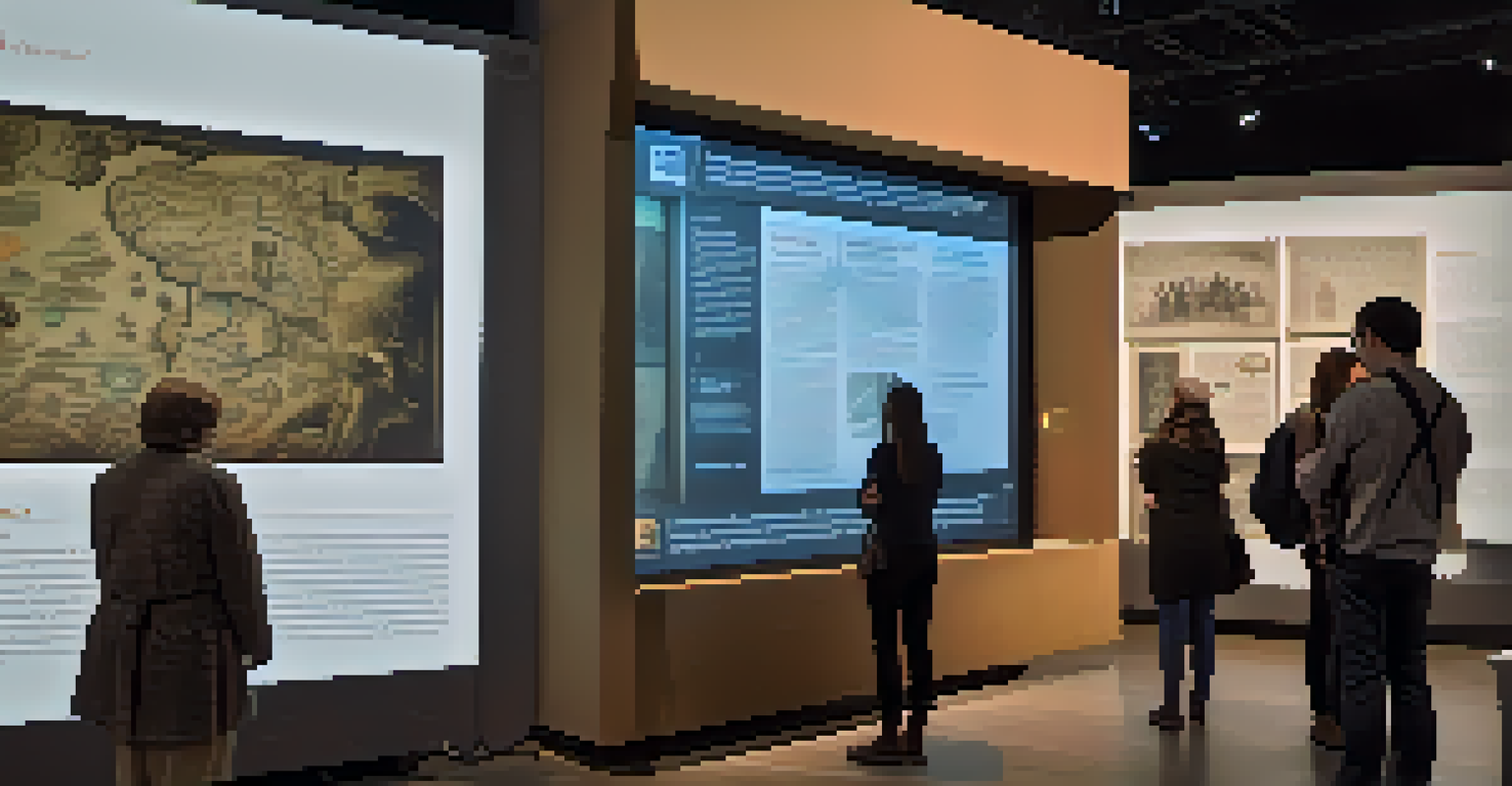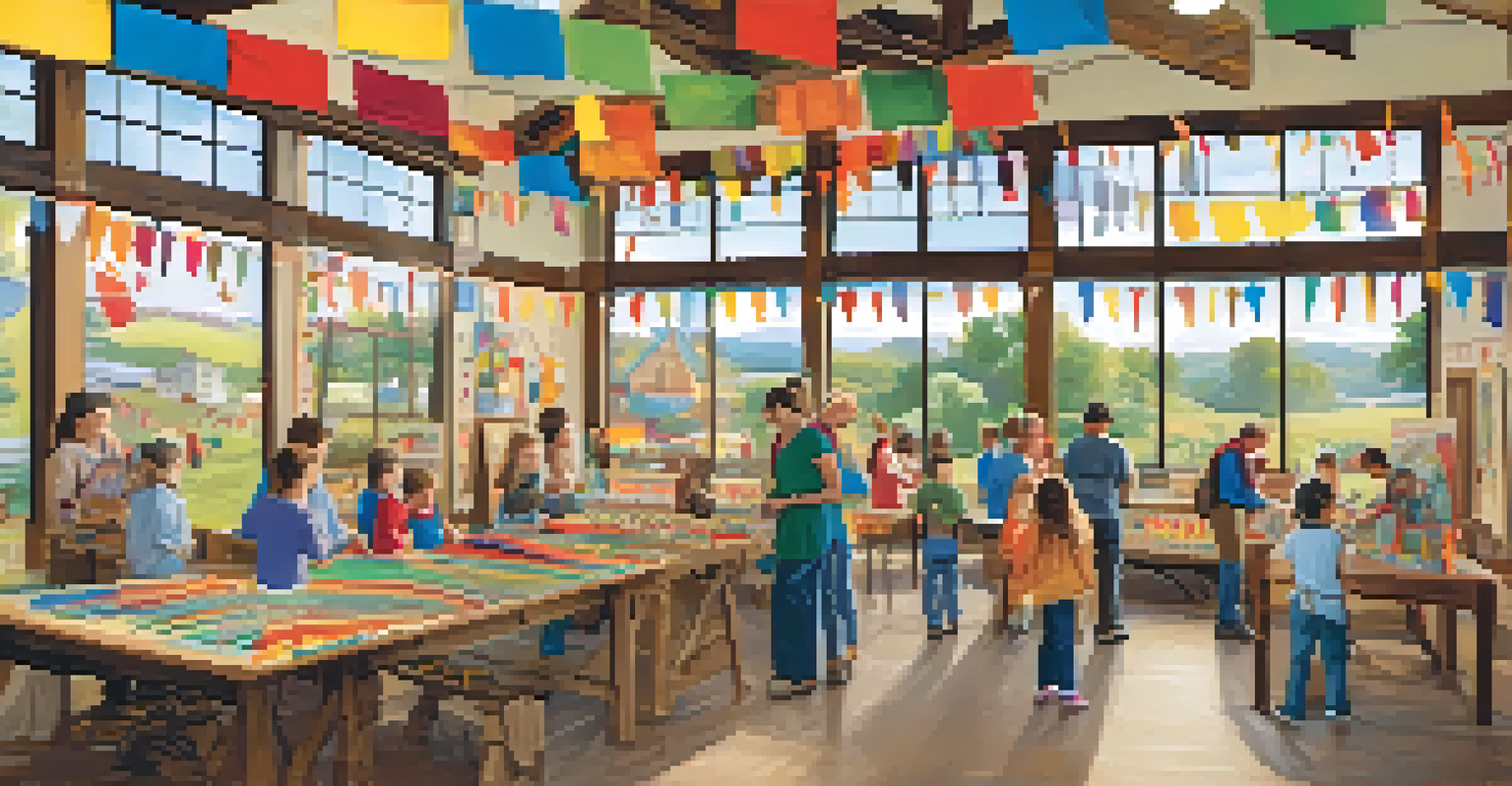Interactive Exhibits at India's Heritage Interpretation Centers

What are Heritage Interpretation Centers?
Heritage Interpretation Centers serve as gateways to understanding a region's cultural and historical significance. These centers often house various exhibits that narrate the stories of local traditions, art, and history. By engaging visitors through interactive displays, they create immersive learning experiences that go beyond traditional museum exhibits.
The past is never dead. It’s not even past.
In India, these centers play a crucial role in preserving the diverse cultural heritage of the country. They offer a unique blend of education and entertainment, making history accessible and relatable to visitors of all ages. As you explore these centers, you'll find that they not only educate but also inspire a deeper appreciation for India's rich tapestry of cultures.
With the advent of technology, many of these centers have evolved to incorporate digital and interactive elements. This transformation has led to more engaging experiences, allowing visitors to connect with India's heritage in innovative ways.
The Role of Interactive Exhibits
Interactive exhibits are designed to captivate and engage visitors, encouraging them to participate actively in their learning journey. By incorporating touchscreens, augmented reality, and hands-on activities, these exhibits make history come alive. For instance, a visitor might use a digital tablet to explore ancient manuscripts or engage in a virtual reality experience that transports them to a historical event.

These interactive features cater to various learning styles, making it easier for individuals to absorb information. By appealing to both visual and kinesthetic learners, these exhibits ensure that everyone can leave with a deeper understanding of the subject matter. This approach not only enriches the visitor experience but also fosters a lasting connection to India's heritage.
Engagement through Interactive Exhibits
Heritage Interpretation Centers use interactive displays to captivate visitors, making learning about history both fun and memorable.
Moreover, interactive exhibits can spark curiosity and encourage visitors to ask questions or seek additional information. This inquisitive spirit is vital for promoting cultural awareness and appreciation among audiences, ultimately leading to a more informed society.
Notable Heritage Centers in India
India is home to several renowned Heritage Interpretation Centers, each offering unique interactive experiences. For example, the Indian Museum in Kolkata showcases a vast collection of artifacts, enhanced with digital displays that narrate the stories behind each piece. Visitors can engage with exhibits that highlight the historical context and significance of the artifacts, making the experience both educational and enjoyable.
History is not a burden on the memory but an illumination of the soul.
Another notable center is the Gandhi Smriti and Darshan Samiti in Delhi, which features interactive exhibits that recount Mahatma Gandhi's life and principles. Here, visitors can access multimedia presentations and participate in activities that reflect Gandhi's philosophy of non-violence and social justice.
These centers not only celebrate India's rich history but also encourage visitors to reflect on the values and lessons that can be learned from the past. By showcasing the diversity of India's cultural heritage, these centers foster a sense of national pride and unity.
The Impact of Technology on Exhibits
Technology has transformed how we experience heritage exhibits, making them more engaging and accessible. Virtual reality, for instance, allows visitors to experience historical events as if they were part of them, bridging the gap between past and present. This innovative approach can evoke strong emotional responses, deepening the connection to the history being presented.
Additionally, interactive apps and digital kiosks offer visitors the opportunity to explore exhibits at their own pace. This flexibility enables a personalized experience, allowing individuals to delve deeper into aspects of interest. Such technology also makes it easier to reach a broader audience, including younger generations who are often more comfortable with digital interfaces.
Technology Enhances Visitor Experience
Advancements like virtual reality and interactive apps are transforming how audiences engage with heritage, ensuring a personalized and immersive experience.
As technology continues to evolve, so too will the ways in which we engage with our heritage. This ongoing innovation promises to keep cultural history relevant and captivating, ensuring that future generations remain connected to their roots.
Enhancing Visitor Engagement
Visitor engagement is at the heart of successful Heritage Interpretation Centers. By creating interactive exhibits, these centers encourage active participation, making learning more enjoyable. When visitors can touch, manipulate, or interact with displays, they are more likely to retain information and develop a genuine interest in the subject matter.
Interactive quizzes and games are often incorporated into exhibits to promote engagement further. These elements turn learning into a fun challenge, enticing visitors to test their knowledge and compete with friends or family. This gamified approach not only enhances the experience but can also lead to repeat visits as people return to explore new exhibits or improve their scores.
Ultimately, engaging visitors through interactivity helps to foster a sense of community and shared experience. It allows individuals from diverse backgrounds to connect over a common interest in heritage, cultivating a deeper appreciation for the cultural narratives that shape our identities.
Challenges in Implementing Interactive Exhibits
While interactive exhibits offer numerous benefits, implementing them can come with challenges. One of the primary concerns is the cost associated with developing and maintaining technology-driven displays. Budget constraints can limit the scope of exhibits, making it difficult for some centers to fully embrace interactive elements.
Additionally, there can be a learning curve for both staff and visitors when it comes to using new technologies. Staff need proper training to manage and maintain the exhibits, while some visitors may feel intimidated by digital interfaces. Creating a welcoming environment and providing adequate support can help mitigate these issues.
Challenges in Exhibit Implementation
Despite the benefits of interactive exhibits, centers face challenges such as budget constraints and the need for staff training to effectively use new technologies.
Despite these challenges, many centers are finding innovative solutions to enhance their exhibits. By collaborating with technology partners and seeking funding through grants or sponsorships, they can continue to create engaging experiences that resonate with audiences.
Future Trends in Heritage Interpretation
The future of Heritage Interpretation Centers looks promising, especially with the ongoing advancements in technology. We can expect to see even more immersive experiences, such as augmented reality, which blends the digital and physical worlds. This technology could allow visitors to see historical figures or events come to life as they explore different exhibits.
Another trend is the increasing focus on storytelling as a means to connect with visitors. By weaving personal narratives into exhibits, centers can create emotional connections that resonate with audiences. This approach can make history feel more relevant and relatable, encouraging visitors to engage with the content on a deeper level.

As more centers adopt these trends, the role of Heritage Interpretation Centers will continue to evolve. They will not only serve as places of learning but also as hubs for community engagement and cultural exchange, fostering a greater understanding of India's diverse heritage.